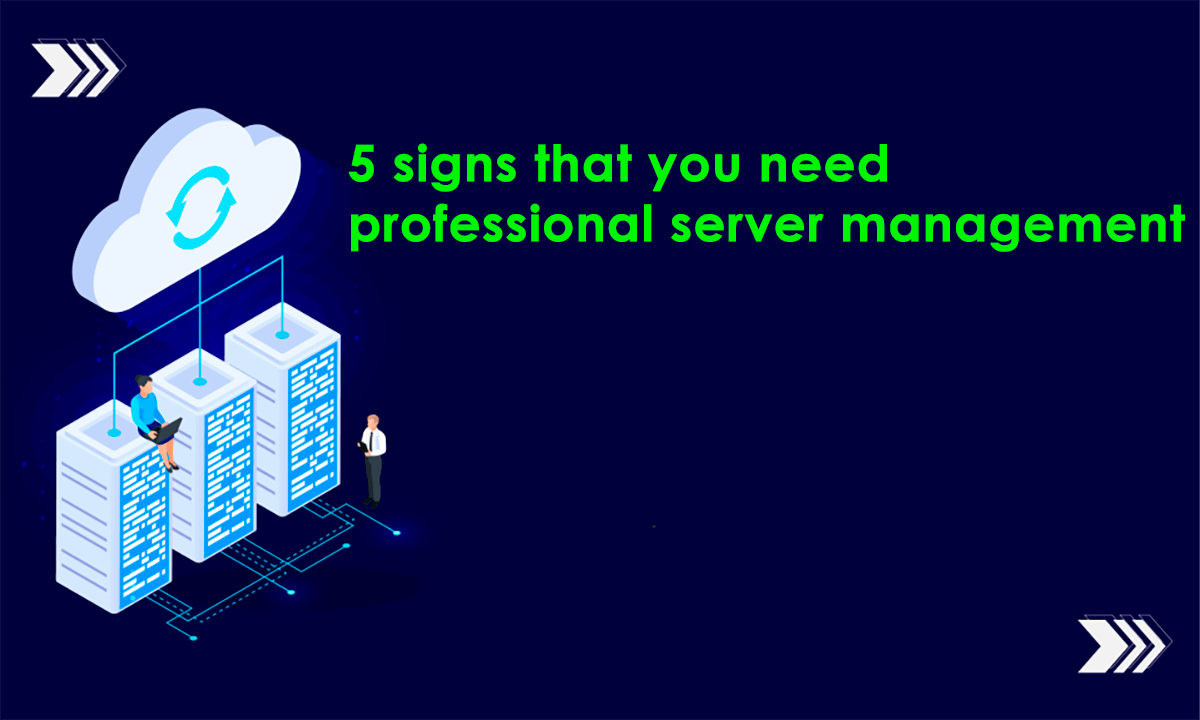Next we will discover 5 signs that you need professional server management. The performance, security and stability of a server is crucial for the success of any digital business. However, many companies underestimate the complexity and time needed to maintain a healthy server environment. Negligence can lead to security lapses, lost data and wasted downtime.
If you or your team identify with the scenarios to follow, it may be time to consider hiring a professional server management service.
1 – Recurring security problems or lack of knowledge in cyber security
One of the most critical sinais is the inability to guarantee the security of the server. If you have faced malware attacks, attempted invasions, or are simply not sure whether the best security practices are being applied, your business is at risk.
Indicators:
- Lack of updates and security patches: Outdated servers are suitable for attacks that explore known vulnerabilities.
- Improper firewall configurations: A poorly configured firewall may allow unauthorized access.
- Absence of safety monitoring: Without constant accompaniment, suspicious activities may go unnoticed because it is too late.
- Lack of compliance with the LGPD: The German Data Protection Law requires technical measures to protect personal data, and failure to comply can result in heavy fines.
Server management professionals implement a defense in several layers, with proactive monitoring, regular updates and robust security policies to protect your data and the reputation of your company.
2 – Slow and unstable server performance
Is your site or application slow? Do users complain about jobs or pages that take a while to load? A slow server can frustrate visitors and harm your rankings in search engines like Google.
Indicators:
- High usage of CPU, RAM or disk space: Resource depletion is a common cause of slowness and may indicate the need for optimization or a hardware upgrade.
- Traffic spikes causing instability: A misconfigured server may not be able to get lidar with sudden increases in the number of accesses.
- “Internal Server Error” (Erro 500) or other common error messages: These are symptoms that something is wrong in the configuration of the server or in the application.
Professional management analyzes resource usage, optimizes server and database configurations, and ensures that your environment is prepared to scale as your business grows.
3 – Downtime (time of inactivity) frequent and financial prejudices.
Every minute your server is offline can mean lost sales, damaged credibility, and a negative customer experience. The cost of downtime is often underestimated, but it can significantly impact a company’s finances.
Indicators:
- Your website or system is frequently inaccessible.
- In-house IT staff spends significant time “fighting fires” to restore services.
- Loss of revenue and business opportunities during outages.
The HelpSysAdmin offer 24/7 monitoring and disaster recovery plans to minimize downtime and ensure business continuity.
4 – Lack of time and technical expertise in the team
Managing a server requires a specific skill set and a considerable investment of time. If your in-house team is overloaded with other tasks or lacks the necessary in-depth knowledge, server maintenance ends up being neglected.
Indicators:
- The IT team lacks expertise in server administration (Linux, Windows Server, etc.).
- Server management tasks are performed reactively, only when a problem occurs.
- There is no established routine for backups, updates, and monitoring.
- The IT team’s focus is being diverted from strategic business projects.
Outsourcing server management frees up your team to focus on core business, leaving infrastructure in the hands of dedicated specialists.
5 – High operational and opportunity costs
Many companies believe that managing their own servers is more cost-effective. However, when you factor in the costs of specialist salaries, training, monitoring tools, and, most importantly, the losses caused by failures and downtime, hiring a professional service can prove more advantageous.
Indicators:
- Difficulty predicting IT infrastructure maintenance costs.
- High costs for emergency troubleshooting.
- The opportunity cost of having in-house staff focused on operational tasks rather than strategic ones.
A professional management service offers a predictable monthly cost and access to experts, which, in the long run, represents savings and a better return on investment.

